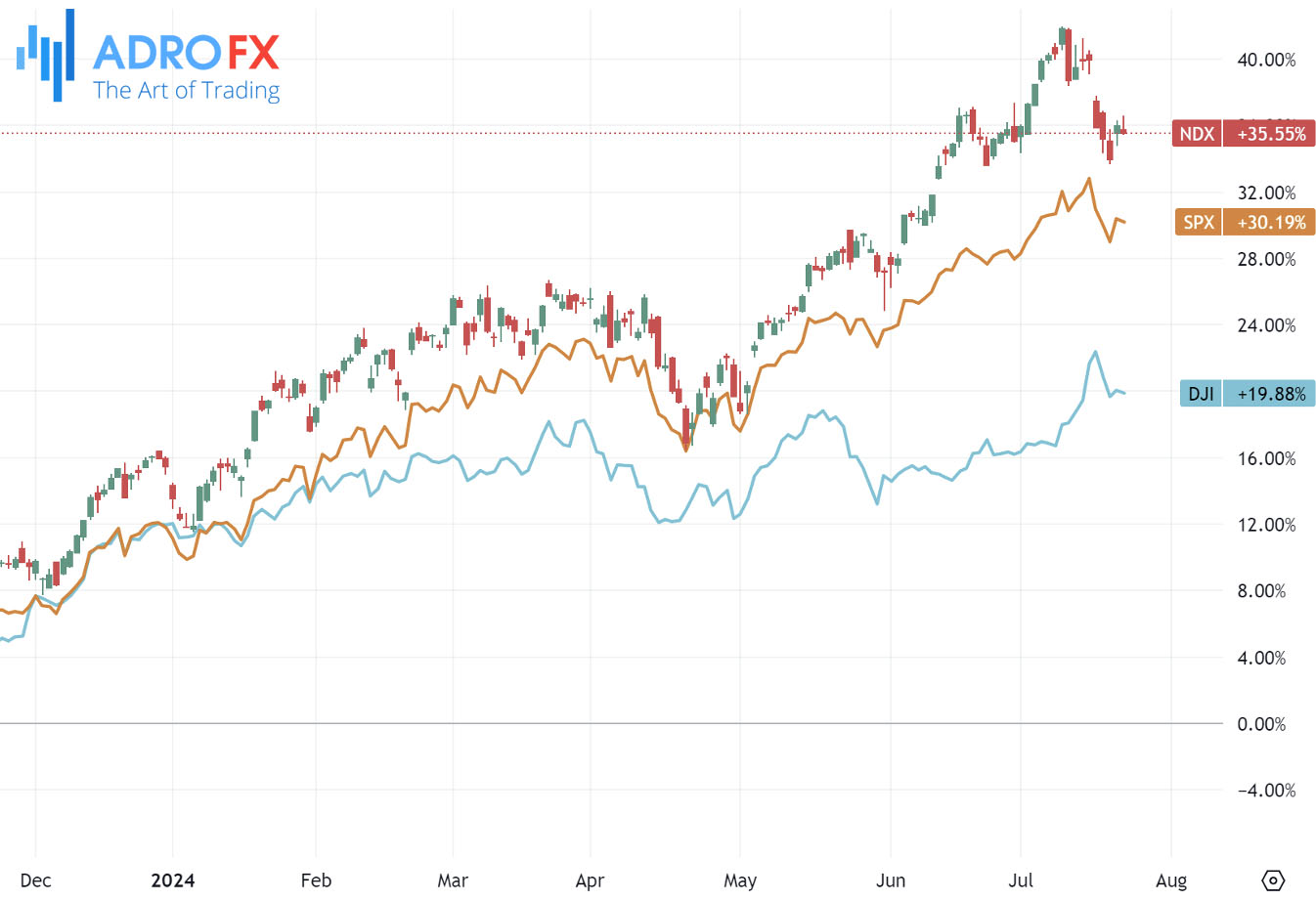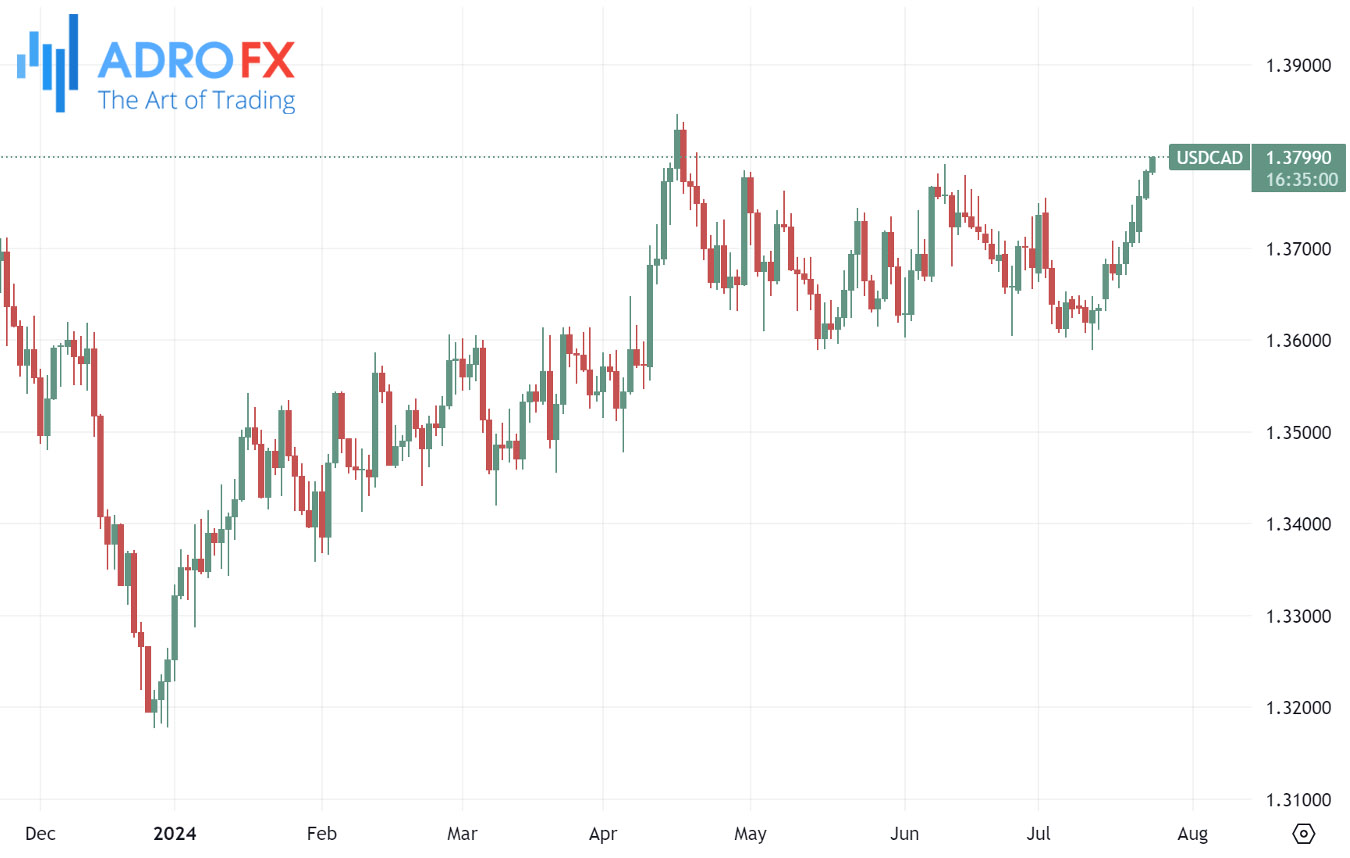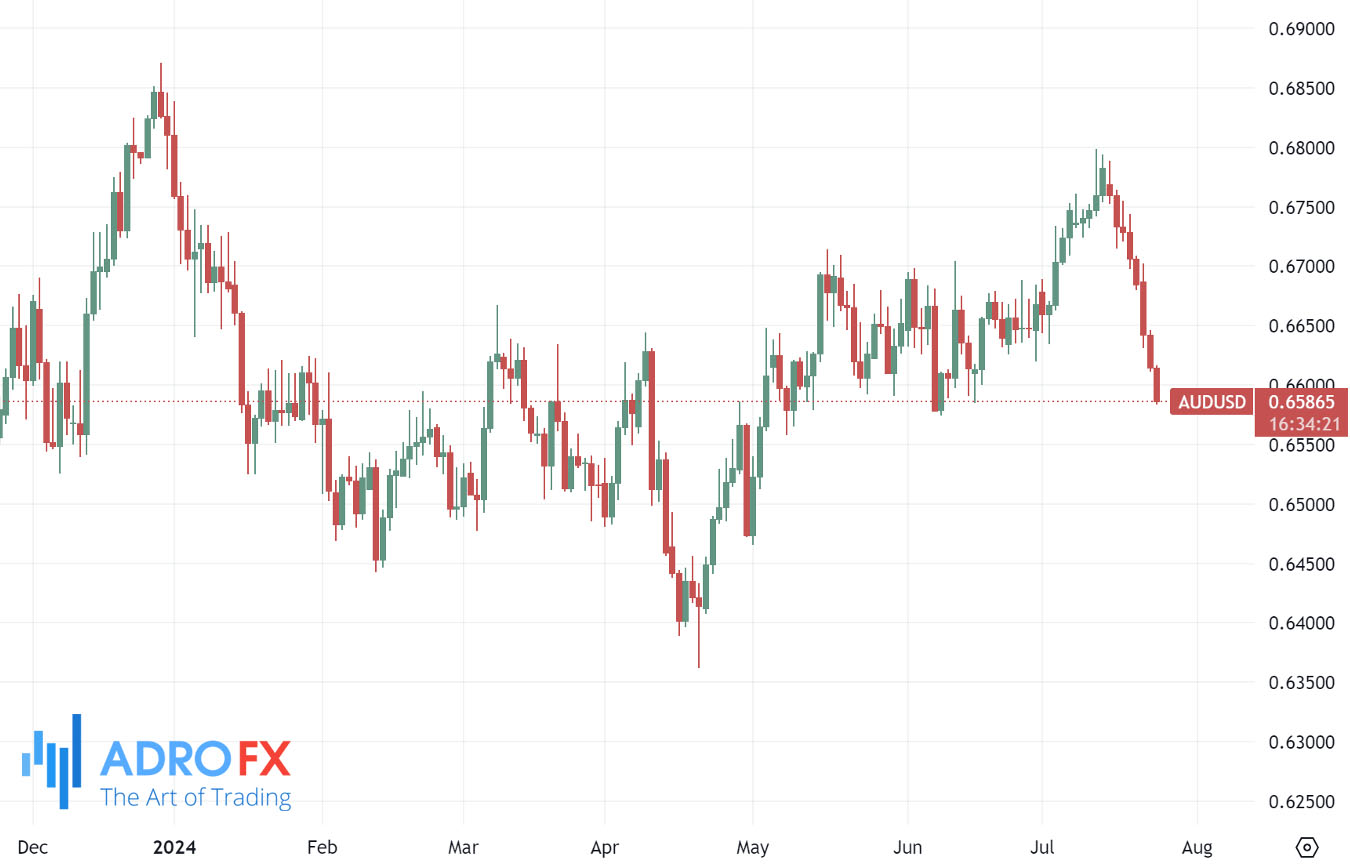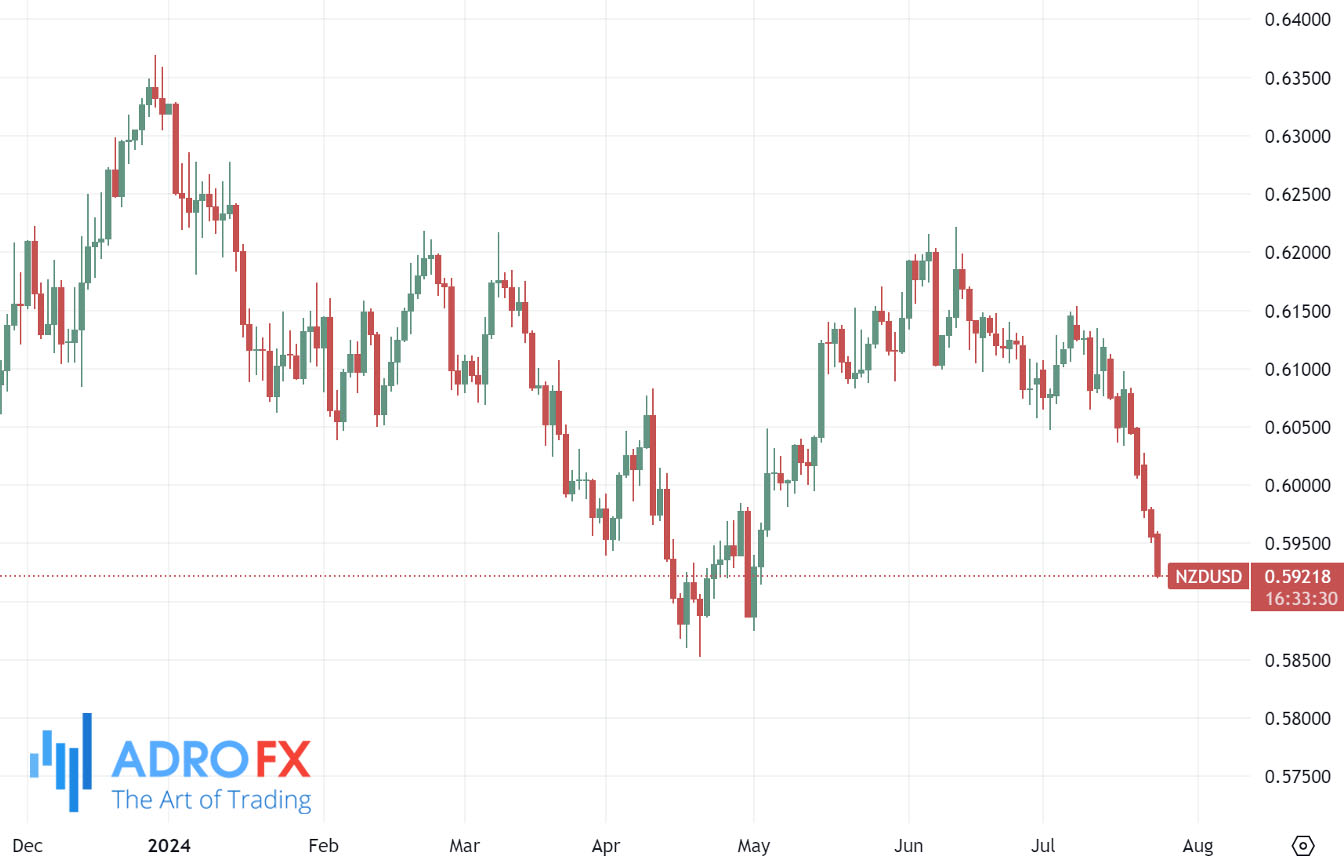Markets Slip Ahead of Tech Earnings as Investors Eye Fed Policy and Global Economic Concerns | Daily Market Analysis

Key events:
- USA - S&P Global US Manufacturing PMI (Jul)
- USA - S&P Global Services PMI (Jul)
- Canada - BoC Interest Rate Decision
- USA - New Home Sales (Jun)
- USA - Crude Oil Inventories
The S&P 500 closed lower on Tuesday amid cautious trading ahead of quarterly earnings from major tech companies.
The Dow Jones Industrial Average fell 57 points, or 0.1%, while the S&P 500 dropped 0.2%, and the NASDAQ Composite declined 0.1%.

Alphabet and Tesla are set to kick off earnings reports from the "Magnificent 7” cohort of megacap tech stocks, which also include Apple Inc., Amazon.com Inc., Meta Platforms Inc., and Microsoft Corporation.
Alphabet's report is expected to provide insights into how Wall Street’s internet giants are benefiting from artificial intelligence, as well as their spending on developing new technologies.
Tesla’s earnings will reveal how the electric vehicle maker is managing a sharp decrease in demand, with additional focus on its AI-driven autonomous driving and robotaxi promises.
Gold prices continued to rise on Wednesday, building on the previous day's recovery from over a one-week low. The increase is driven by a weaker risk tone, which benefits traditional safe-haven assets, lifting the precious metal to a fresh weekly high around the $2,415 region during the Asian session. Additionally, bets that the Federal Reserve will begin cutting interest rates in September are contributing to the flow toward the non-yielding yellow metal.

Meanwhile, the US Dollar has climbed to a nearly two-week low amid an increase in US Treasury bond yields, likely capping further gains for gold. Traders may also prefer to wait for more signals on the Fed's policy direction before making new bets on the non-yielding metal. Market attention will focus on the release of the Advance US Q2 GDP and the US Personal Consumption Expenditures Price Index data on Thursday and Friday, respectively.
The USD/CAD pair continued its rally, reaching around 1.3785 during the early Asian session on Wednesday. The pair edged higher amid a risk-off mood, broadly boosting the Greenback. Investors are closely monitoring the Bank of Canada interest rate decision expected later in the day, with a projected 25 basis points (bps) cut to 4.5%.

Following indications of reduced price pressures in June, financial markets have nearly fully anticipated a 25 basis point rate reduction by the Bank of Canada. Taylor Schleich, a rates strategist at the National Bank of Canada, commented, "A rate cut is likely to be delivered," and suggested that the Canadian central bank might emphasize that any further cuts will depend on economic data.
Simultaneously, concerns over demand from China and easing geopolitical tensions have pushed crude oil prices to their lowest levels in six weeks. This decline is detrimental to the Canadian Dollar, given Canada’s prominent role as a crude oil exporter to the United States. The expectations of a BoC rate cut, combined with falling crude oil prices, could boost the USD/CAD pair in the short term.
The Australian Dollar has continued its losing streak for the eighth straight day following mixed data from Australia’s Judo Bank Purchasing Managers Index released on Wednesday. Weak economic activity in China has exerted additional selling pressure on the AUD. Worries about China’s economic slowdown intensified after the People’s Bank of China unexpectedly cut rates on Monday.
Furthermore, a bleak outlook for the Chinese economy has led to a drop in iron ore prices, adding more pressure on the Australian Dollar. Iron ore prices have slid towards $108.00, their lowest in three weeks, significantly affecting Australia, the world's largest exporter of this commodity.

The Japanese Yen has extended its gains for the third consecutive session on Wednesday, likely driven by a return to risk-off sentiment. The Bank of Japan is expected to raise interest rates at next week’s policy meeting, causing short-sellers to close their positions, which has supported the JPY.

Toshimitsu Motegi, a senior official from the ruling party, urged the BoJ to clearly communicate its plan to normalize monetary policy through gradual rate hikes. Prime Minister Fumio Kishida added that normalizing the central bank’s policy would aid Japan’s shift to a growth-oriented economy.
The NZD/USD pair encountered selling pressure around 0.5945 during the early Asian session on Wednesday. The risk-off sentiment and a modest rebound of the US Dollar dragged the pair to its lowest level since May 2.

The New Zealand Dollar weakened due to rising expectations of an imminent rate cut by the Reserve Bank of New Zealand following lower-than-expected Consumer Price Index inflation for New Zealand in the second quarter (Q2). Concerns about weak Chinese economic activity and a surprise rate cut by the PBoC earlier this week also contributed to the Kiwi’s decline.
Investors are awaiting further insights from the US preliminary S&P Global PMIs for July to confirm the rate outlook. The Manufacturing PMI is projected to increase to 51.7 in July from 51.6 in June, while the Services PMI is expected to slightly decrease to 54.4 in July from 55.3.









